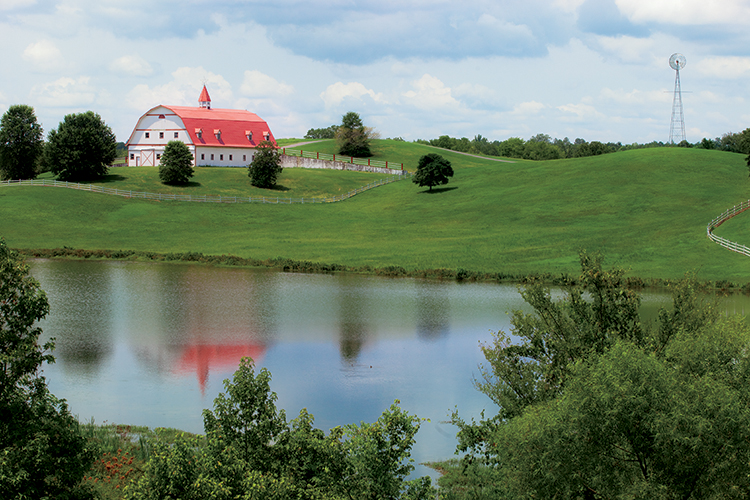Home > Alabama > Alabama Crops & Livestock > The Strategic Plan to Accelerate Alabama
The Strategic Plan to Accelerate Alabama

A 2012 economic impact study by Auburn University and the Alabama Cooperative Extension System revealed that agriculture, forestry and agribusiness make up $70.4 billion of Alabama’s gross domestic product. That’s 38 percent of the state’s annual economic output.
The study also showed that these sectors employ about 588,000 people – about one-fourth of the state’s total employment – making agriculture the top economic industry in Alabama.
“Agriculture has enjoyed an annual growth in the past five years of 6 percent a year. That’s three to four times more than the GDP growth of Alabama,” says Brett Hall, deputy commissioner of the Alabama Department of Agriculture and Industries. “Even when the overall economy was not faring well, agriculture was. And the outlook is very good.”
![Alabama agriculture [INFOGRAPHIC]](https://eadn-wc01-4177395.nxedge.io/wp-content/uploads/2020/05/Screen-Shot-2015-02-13-at-4.29.25-PM.png)
Ideas to Grow On
Nevertheless, Hall says there is still room to grow. With that in mind, the department is partnering with the Alabama Department of Commerce as well as key industrial and educational leaders to develop Accelerate Alabama, a multi-pronged economic development strategy aimed at recruiting new business to and strengthening existing industries within the state.
The strategic plan includes providing the agriculture industry with access to capital and a quality workforce, as well as the freedom to “operate without unreasonable regulation,” Hall says.
Expanding Market Access
The plan also calls for access to local, regional, domestic and international markets.
The Alabama International Trade Center at the University of Alabama works closely with the Alabama Department of Agriculture and Industries to help some of the state’s small and medium-sized food processing companies find new markets for their products. The trade center holds workshops and provides information on areas such as pricing, currency, payment, shipping and marketing.
“From an export standpoint, agriculture is renewable and sustainable. When those products are exported overseas, they’re eaten and consumed, and buyers overseas reorder. It’s a continuous cycle,” says Brian Davis, director of the Alabama International Trade Center. “There are trends toward consuming foods that are organic, and there are opportunities to capitalize on that. [Such as] having a strong growing base that could be expanded, and items that could be sourced locally and produced and shipped out for the regional market.”
![Alabama agriculture [INFOGRAPHIC]](https://eadn-wc01-4177395.nxedge.io/wp-content/uploads/2020/05/Screen-Shot-2015-02-13-at-4.28.55-PM.png)
Commodity Collaboration
The Alabama Department of Agriculture and Industries is also working with the Alabama Farmers Federation to get input from growers.
“We’re excited about parts of the plan specific to farmers, which include funding for research at our land grant universities and extension facilities. Those are included in the plan based on the needs that our farmers brought forth during the planning process,” says Paul Pinyan, Alabama Farmers Federation executive director.
Hall says the plan also calls for sales tax limitations on ag-related capital investments, such as the purchase or construction of cotton gins, mills, irrigation systems, tractors or processing equipment.
Positive Inputs
Attracting new businesses is another fundamental tenet of the strategic plan, with the goal of growing the state’s agriculture manufacturing base.
“We’re really strong in commodity production – cotton, peanuts, soybeans. Looking at just the manufacturing sector, it’s fairly strong, but it’s geared toward animal feed and commodity meats. So the idea put forth in the report is that there’s opportunity to increase the number of value-added producers and the types of products made in Alabama,” Davis says.
Pinyan agrees and adds that a strong manufacturing base will, “provide more opportunities for young farmers who are just beginning their careers, and provide an outlet for them to be able to sell those products.
“We have the climate and the available resources like land and water that we can use to actually increase production. That will be good for all of Alabama.”



